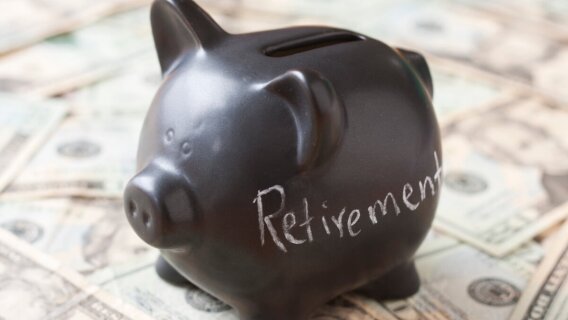Investing for retirement is a subject we cover a lot here at Cabot Wealth. But what about investing after retirement, when you no longer have a steady paycheck or a company-supported 401(k) or IRA? That can be a bit scary if you don’t have a plan.
Fortunately, the “plan” doesn’t have to be complicated. Really, there are two strategies that can help alleviate the fear of investing after retirement: crash-proofing your portfolio and developing a sell strategy. Let’s tackle these one at a time.
Investing After Retirement: Crash-Proofing Your Portfolio
The best time to buy an umbrella is before it starts to rain. So even though we don’t know if another sell-off is coming, it’s still important for all investors to have a crash contingency plan in place—especially if you’re a retiree who depends partly on your investment income to cover living expenses.
If you’re investing after retirement, you need to ensure that that income will continue even during periods of major price declines. Most dividend stocks fit the bill, but take a hard look at any income-focused funds you hold. Are they just passing on dividend income, or are they generating income through some price-reliant strategy like covered calls or return of capital? You don’t necessarily need to sell these holdings now, but figure out if you can live without that income in the event of a market crash. If not, figure out how you’re going to replace it.
[text_ad]
Stock dividends can remain a great source of income in almost all market environments. Over the past 80 years, between 30% and 40% of stocks’ total returns have come from dividends, not price appreciation. Morningstar has crunched the numbers going back to 1927 to show that dividend income accounts for 41% of the annualized total return from large-cap stocks, 35% of the total return from mid-cap stocks and 31% from small-cap stocks.
Plus, dividend-paying stocks are less volatile than other stocks. Data collected by Eugene T. Fama and Kenneth R. French shows that dividend-paying stocks are 5% to 20% less volatile than other stocks. Their volatility does increase when overall volatility increases (as it has in recent years), but dividend payers are generally much calmer (measured by looking at the average standard deviation of trailing monthly returns).
Resilient, cash-rich dividend payers are the best vehicle for maintaining a steady income during troubled times in the stock market. They lose less of their value during corrections, they’re less volatile overall and they keep paying you regardless of what their stock prices are doing.
Market collapses can come in many varieties. The 2008 crash hit all stocks hard, but the worst damage was done to stocks of financials, housing-related companies and businesses with high debt or business models based on borrowing. The 2000 crash hit tech companies particularly hard, which was especially devastating for investors who owned mostly dot-coms.
Look at your holdings individually. What type of event would be the worst-case scenario for each one? Do you have other holdings that would also be devastated in this situation? Be frank with yourself. If you have too many holdings with similar risk factors, you probably need to diversify.
Investing after Retirement: Developing a Sell Strategy
Even in the absence of a full-fledged crash, you need to have a sell strategy that you can apply to all your stocks individually. Though income investing is mostly a buy-and-hold proposition, that doesn’t mean buy-and-hold-on-for-dear-life, whatever happens. And it certainly doesn’t mean buy and hold regardless of how far the stock falls.
You should consider benchmarks for things like payout ratio, cash flow growth, dividend growth rate and other factors that are important to the company’s continued ability to pay its dividend. If a stock you’re investing in no longer hits its benchmark targets, whatever those may be, you should reassess the position.
Looking for these “red flags” can get you out of stocks that don’t have the strength to hold up to a big crash. You can create your own simple sell discipline by writing down rules for yourself like, “If a stock cuts its dividend, sell.” This won’t get you out at the top (dividend cuts are usually last-ditch moves, after all), but it will keep you from holding on to losers forever.
The simplest sell rules are those based on price. Ask yourself: What type of losses (percentage-wise) am I willing to absorb? Cabot’s growth advisories suggest you employ a 10% to 15% loss limit, but you’ll probably choose to give some of your income-generating holdings more leeway.
Coca-Cola (KO), for example, lost 30% from the 2007 market peak to the 2009 trough. A growth investor would have (and should have) sold. But the company never cut its dividend. In fact, it raised its dividend on schedule in 2008 and 2009. And the blue-chip recovered its 30% hit by the end of 2010 and has continued to thrive since.
The bottom line is that if you’re holding a diversified-enough portfolio that includes the right kind of dividend stocks, you’ll be better able to ride out crashes. Even if you don’t have a steady paycheck to fall back on.
What sell criteria do you employ to cut your losers short and let your winners run?
[author_ad]
*This post has been updated from a previously published version.
